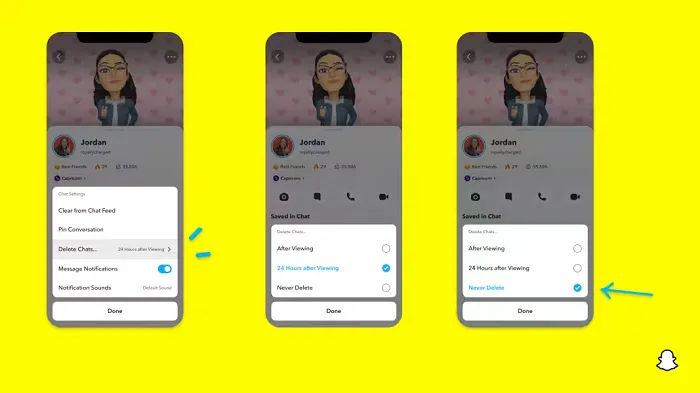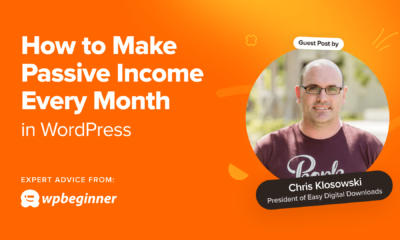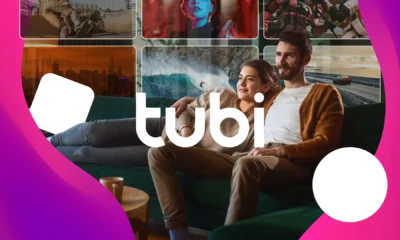SOCIAL
LinkedIn Provides Insight into How its Feed Algorithm Works in New Video Series
LinkedIn is currently seeing ‘record levels’ or user engagement, but much of that is seemingly dominated by re-posts from other platforms, spam, vaguely topical polls, and various other low-interest posting actions, designed specifically to generate shallow engagement.
At least, that’s how it feels, but LinkedIn is working to improve this, and today, LinkedIn has kicked off a new initiative to provide more transparency into how it’s working to combat these elements, and improve your LinkedIn experience.
As explained by LinkedIn:
“Starting today and over the next several weeks, we’ll publish “Mythbusting the Feed”, a series of blog posts and on-platform content that will aim to provide greater insights into how our product works, and addressing common misconceptions and assumptions. Our ultimate goal is to be transparent with you on how we think about the feed, and how things work.”
The first two videos in the series are now active, with LinkedIn’s VP of Engineering Sabry Tozin explaining what types of content LinkedIn seeks to amplify in-stream:
As well as the alignment between professional and personal growth via LinkedIn content:
The latter is probably a key focus note, with many seemingly off-topic posts potentially falling into the more ‘personal’ category.
Should you be posting the same updates that you share on Facebook to LinkedIn as well, where your audience will be professionals and those in your peer network? In most cases, probably not, but as Tozin explains, there is some crossover that’s acceptable, and aligns with LinkedIn’s use case.
That’s interesting insight to have – but really, what LinkedIn users more likely want to know is what gets more traction on the platform, and what’s likely to be penalized by its algorithms.
LinkedIn hasn’t traditionally provided a heap of insight on this (hence this new initiative), but it has previously noted that:
So if you want to maximize your content performance on LinkedIn, you probably want to steer away from these elements, and focus on crafting relevant, engaging posts that align with your target audience.
That, of course, won’t stop some people from re-sharing viral posts from other apps as a means to lure cheap engagement.
But LinkedIn’s hoping to be able to provide more oversight into how it’s tackling such with this new initiative, which could help you build a more effective, engaging presence in the app.
The first two videos (above) are fairly general, but LinkedIn says that it has more info coming, including:
- Mythbusting the Feed: How the Algorithm Works and Personalizing the Feed
- Mythbusting the Feed: Content Distribution and How We Work to Address Bias
Hopefully these elements will have more specific, actionable tips to help improve your LinkedIn approach.
SOCIAL
Snapchat Explores New Messaging Retention Feature: A Game-Changer or Risky Move?

In a recent announcement, Snapchat revealed a groundbreaking update that challenges its traditional design ethos. The platform is experimenting with an option that allows users to defy the 24-hour auto-delete rule, a feature synonymous with Snapchat’s ephemeral messaging model.
The proposed change aims to introduce a “Never delete” option in messaging retention settings, aligning Snapchat more closely with conventional messaging apps. While this move may blur Snapchat’s distinctive selling point, Snap appears convinced of its necessity.
According to Snap, the decision stems from user feedback and a commitment to innovation based on user needs. The company aims to provide greater flexibility and control over conversations, catering to the preferences of its community.
Currently undergoing trials in select markets, the new feature empowers users to adjust retention settings on a conversation-by-conversation basis. Flexibility remains paramount, with participants able to modify settings within chats and receive in-chat notifications to ensure transparency.
Snapchat underscores that the default auto-delete feature will persist, reinforcing its design philosophy centered on ephemerality. However, with the app gaining traction as a primary messaging platform, the option offers users a means to preserve longer chat histories.
The update marks a pivotal moment for Snapchat, renowned for its disappearing message premise, especially popular among younger demographics. Retaining this focus has been pivotal to Snapchat’s identity, but the shift suggests a broader strategy aimed at diversifying its user base.
This strategy may appeal particularly to older demographics, potentially extending Snapchat’s relevance as users age. By emulating features of conventional messaging platforms, Snapchat seeks to enhance its appeal and broaden its reach.
Yet, the introduction of message retention poses questions about Snapchat’s uniqueness. While addressing user demands, the risk of diluting Snapchat’s distinctiveness looms large.
As Snapchat ventures into uncharted territory, the outcome of this experiment remains uncertain. Will message retention propel Snapchat to new heights, or will it compromise the platform’s uniqueness?
Only time will tell.
SOCIAL
Catering to specific audience boosts your business, says accountant turned coach

While it is tempting to try to appeal to a broad audience, the founder of alcohol-free coaching service Just the Tonic, Sandra Parker, believes the best thing you can do for your business is focus on your niche. Here’s how she did just that.
When running a business, reaching out to as many clients as possible can be tempting. But it also risks making your marketing “too generic,” warns Sandra Parker, the founder of Just The Tonic Coaching.
“From the very start of my business, I knew exactly who I could help and who I couldn’t,” Parker told My Biggest Lessons.
Parker struggled with alcohol dependence as a young professional. Today, her business targets high-achieving individuals who face challenges similar to those she had early in her career.
“I understand their frustrations, I understand their fears, and I understand their coping mechanisms and the stories they’re telling themselves,” Parker said. “Because of that, I’m able to market very effectively, to speak in a language that they understand, and am able to reach them.”Â
“I believe that it’s really important that you know exactly who your customer or your client is, and you target them, and you resist the temptation to make your marketing too generic to try and reach everyone,” she explained.
“If you speak specifically to your target clients, you will reach them, and I believe that’s the way that you’re going to be more successful.
Watch the video for more of Sandra Parker’s biggest lessons.
SOCIAL
Instagram Tests Live-Stream Games to Enhance Engagement

Instagram’s testing out some new options to help spice up your live-streams in the app, with some live broadcasters now able to select a game that they can play with viewers in-stream.
As you can see in these example screens, posted by Ahmed Ghanem, some creators now have the option to play either “This or That”, a question and answer prompt that you can share with your viewers, or “Trivia”, to generate more engagement within your IG live-streams.
That could be a simple way to spark more conversation and interaction, which could then lead into further engagement opportunities from your live audience.
Meta’s been exploring more ways to make live-streaming a bigger consideration for IG creators, with a view to live-streams potentially catching on with more users.
That includes the gradual expansion of its “Stars” live-stream donation program, giving more creators in more regions a means to accept donations from live-stream viewers, while back in December, Instagram also added some new options to make it easier to go live using third-party tools via desktop PCs.
Live streaming has been a major shift in China, where shopping live-streams, in particular, have led to massive opportunities for streaming platforms. They haven’t caught on in the same way in Western regions, but as TikTok and YouTube look to push live-stream adoption, there is still a chance that they will become a much bigger element in future.
Which is why IG is also trying to stay in touch, and add more ways for its creators to engage via streams. Live-stream games is another element within this, which could make this a better community-building, and potentially sales-driving option.
We’ve asked Instagram for more information on this test, and we’ll update this post if/when we hear back.
-

 PPC6 days ago
PPC6 days ago19 Best SEO Tools in 2024 (For Every Use Case)
-

 MARKETING6 days ago
MARKETING6 days agoEcommerce evolution: Blurring the lines between B2B and B2C
-
SEARCHENGINES6 days ago
Daily Search Forum Recap: April 18, 2024
-
SEARCHENGINES5 days ago
Daily Search Forum Recap: April 19, 2024
-

 WORDPRESS5 days ago
WORDPRESS5 days agoHow to Make $5000 of Passive Income Every Month in WordPress
-

 SEO6 days ago
SEO6 days ago2024 WordPress Vulnerability Report Shows Errors Sites Keep Making
-

 WORDPRESS6 days ago
WORDPRESS6 days ago10 Amazing WordPress Design Resouces – WordPress.com News
-
WORDPRESS7 days ago
[GET] The7 Website And Ecommerce Builder For WordPress
















You must be logged in to post a comment Login